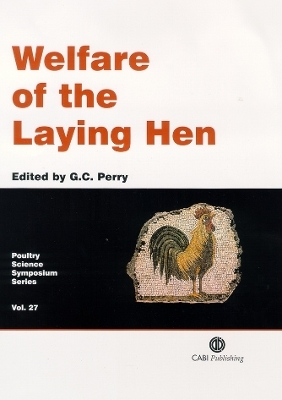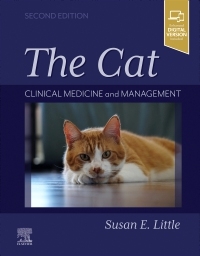
Welfare of the Laying Hen
CABI Publishing (Verlag)
978-0-85199-813-8 (ISBN)
The welfare of egg-producing poultry is a topic of great concern to the poultry industry and to researchers in applied animal behaviour. It is also subject to increased legislation. Issues such as battery cages, space requirements, access to daylight and “free-range” eggs have attracted public interest. This book brings together edited papers from the 27th Poultry Science Symposium of the World’s Poultry Science Association (UK Branch), held in Bristol in July 2003. Topics covered include: welfare issues, perception and cognition, behaviour, health and diseases, stockmanship and the environment, handling, slaughter and transport, and perspectives of consumers and producers.
Dr Graham C Perry 1938-2007 29 October 2007 Dr Graham Perry died on 28 September 2007 at the age of 69. He is remembered here by Professor Avril Waterman-Pearson, Pro Vice-Chancellor. Dr Perry commenced service with the University in August 1967 as Lecturer in Animal Husbandry in the Department of Animal Husbandry at Langford, and was promoted to Senior Lecturer in 1984. Dr Perry graduated in Agriculture from Bangor in 1961 and gained his PhD there in 1964. He then undertook a period of postdoctoral study at Bangor and Raleigh. In 1993 the three departments at Langford merged to form the School of Clinical Veterinary Science, and in 1996 Dr Perry was appointed Head of the Division of Animal Health and Husbandry in the School. In 1998 he was appointed Deputy Head of School until his retirement in August 2003. Dr Perry worked in two major areas of research during his time at Bristol. He studied the influence of environmental (especially lighting) and physiological factors on sexual maturity and egg production in poultry, while in the 1970s and 80s he made groundbreaking contributions to knowledge of the role of pheromones in mammalian reproduction. He was the first to establish the existence of a mammalian chemical communication system and his work is still widely cited as classic contributions to the field.
1: The importance of welfare, J K Kirkwood, Universities Federation for Animal Welfare and Human Slaughter Association, UK Part I: THE STAKEHOLDERS 2: Hen welfare: consumer perspective, P A W Parrott, Harper Adams University College, UK 3: Government views on the welfare of laying hens, D G Pritchard, Department for Environment, Food and Rural Affairs, UK 4: Politics of hen welfare, D Wilkins, Eurogroup for Animal Welfare, Belgium 5: Implications of the World Trade Organization on hen welfare, D Bowles, RSPCA, UK 6: The retailer-consumer relationship with particular reference to animal welfare, R Layton, rlconsulting, UK 7: Quality assurance, J Gittins, ADAS, UK 8: The producer and hen welfare, A Jorêt, Deans Foods Ltd, UK PART II: OVERVIEWS 9: The laying hen: systems of production, A Elson, ADAS Gleadthorpe, UK 10: Stress and the welfare of laying hens, J P Thaxton, Mississippi State University, USA PART III: WELFARE ISSUES 11: Genetic influences on resource use, fear and sociality, J-M Faure, Station de Reserches Avicoles, France, and R B Jones, Roslin Institute (Edinburgh), UK 12: The genetics of feather pecking and cannibalism, J Kjaer, Danish Institute of Agricultural Sciences, Denmark, and P M Hocking, Roslin Institute (Edinburgh), UK 13: Breeding for productivity and welfare, W M Muir, Pardue University, USA, and H-W Cheng, USDA-ARS, USA 14: Sensory perception : chemoreception, D E F McKeegan, Roslin Institute (Edinburgh), UK 15: Vision in the laying hen, N B Prescott, J R Jarvis, and C M Wathes, Silcoe Research Institute, UK 16: Pain and the laying hen, M Gentle and S Wilson, Roslin Institute (Edinburgh), UK 17: Chicken cognition, C J Nicol, University of Bristol, UK 18: Social space for laying hens, J J Cooper and M J Albentosa, University of Lincoln, UK 19: Nesting, perching and dust-bathing, L Keeling, Swedish University of Agricultural Science, Sweden 20: Environmental enrichment: the need for practical strategies to improve poultry welfare, R B Jones, Roslin Institute (Edinburgh), UK 21: Feather pecking and feather loss, B Rodenburg and P Koene, Wageningen University, The Netherlands 22: Cannibalism, R Newberry, Washington State University, USA 23: Skeletal disorders in laying hens: the problem of osteoporosis and bone fractures, C C Whitehead, Roslin Institute (Edinburgh), UK 24: Disease control, D Shingleton, Waterman Farm, UK 25: Environmental management for laying hens, J-M Aerts, Catholic University of Leuven, Belgium, C M Wathes and D Berckmans, Silsoe Research Institute, UK 26: Lighting, G C Perry, University of Bristol, UK 27: Nutrition, feedstuffs and feeding, M G MacLeod, Roslin Institute (Edinburgh), UK 28: Human – animal interactions, P H Hemsworth, Victorian Institute of Animal Science, Australia 29: Handling and catching of hens during depopulation, D Tinker and P S Berry, Silsoe Research Institute, UK, J A Rycroft, Unilever, UK, and N H Sparks, Avian Science Research Centre, UK 30: Transport of chicks, pullets and spent hens, M A Mitchell, Roslin Institute (Edinburgh), UK, and PJ Kettlewell, Silsoe Research Institute, UK 31: Stunning and slaughter, M Raj, University of Bristol, UK PART IV: OUTCOMES 32: Overview, M C Appleby, The Humane Society of the United States, USA PART V: Posters
| Erscheint lt. Verlag | 20.7.2004 |
|---|---|
| Reihe/Serie | Poultry Science Symposium Series |
| Verlagsort | Wallingford |
| Sprache | englisch |
| Maße | 172 x 244 mm |
| Themenwelt | Veterinärmedizin ► Kleintier |
| Weitere Fachgebiete ► Land- / Forstwirtschaft / Fischerei | |
| ISBN-10 | 0-85199-813-5 / 0851998135 |
| ISBN-13 | 978-0-85199-813-8 / 9780851998138 |
| Zustand | Neuware |
| Haben Sie eine Frage zum Produkt? |
aus dem Bereich


